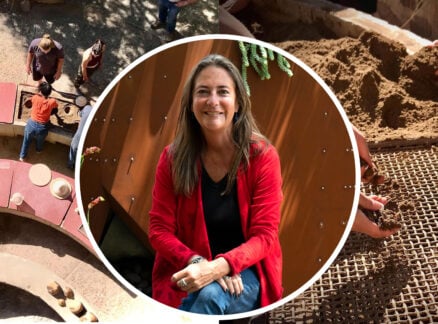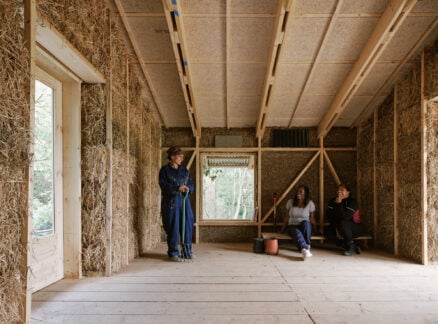
May 23, 2019
5 Leading Experts and Advocates on How Architects Can Fight Climate Change
Metropolis speaks with Michael Sorkin, The Architecture Lobby, Kate Orff, Jesse M. Keenan, and Tom Jacobs on the Green New Deal, Architecture 2030, political activism, and more.

As part of the article “Why the Building Sector May Be Humanity’s Best Hope for Averting Catastrophic Climate Change,” Metropolis asked these eminent members of architecture’s sustainability movement about how firms and individual designers can best make a difference.
Flip the Script
First thing: Vote for candidates who support the Green New Deal like your life depends on it. It does.
Then: Participate in local levels of government or organizations like community boards and nonprofits, and bring your creative design thinking skills to bear in this context. Ideate on and advance localized solutions. Design to influence policy and foster green jobs of the future!
Too often, policy dictates outcomes in the built environment, while speculative design envisions a future without considering the people, labor, and stories embedded in site. We need to flip this and visualize fresh alternatives to feed a more robust vision for what it means to work in the built environment, within a new green policy framework. —Kate Orff, founder and principal, SCAPE
Rise, Citizen Architect
The first step is an attitude change. Fifty years ago, politicians and scientists united behind the “moon shot” and achieved mankind’s first giant leap. The climate crisis is an opportunity—an “earth shot”—to achieve its second leap, and once again our ability to socially and technologically innovate will be the determining factor. For architects to play our part, we need to engage outside our comfort zone. As holistically educated professionals adept in visioning, problem solving, and effective communication, we must put our leadership skills and knowledge to use as advocates to our lawmakers, clients, taxpayers, friends, and neighbors. We must be citizens.
Both the Green New Deal and Architecture 2030 are powerful means to focus a long-overdue discussion, but only when their goals and aspirations are codified in law will we drive the transition to a lowcarbon economy. —Tom Jacobs, cofounder, Architects Advocate for Action on Climate Change
Transformation Through Adaptation
Advancing transformative adaptation in our economy and the built environment will require not only the diffusion of new building technologies and materials, but also the codification of professional ethics. Architects also have to understand that there are trade-offs between adaptation and different types of resilience. None of these concepts and their associated analytical methods or processes will result in an absolute good. Engineering resilience may be in direct contradiction to ecological resilience in a manner that is maladaptive for the collective. If we don’t come to terms with the sacrifice and the nature of the uneven distributional costs and benefits of adaptation, then we are delaying the hard decisions that are necessary for trans- formative adaptation. — Jesse M. Keenan, lecturer in architecture, Harvard Graduate School of Design
No Deal Unless
The objectives of a “Green New Deal” present no serious technical or formal obstacles. Of course, designers of every stripe should faithfully forge ahead with their LEED ratings and sustainable best practices, refine and expand them, propagandize. But this will amount to nothing until the primary obstacle to a renewed environment is removed: Trump and the panoply of Republican politicians who enable him. With every stroke of his presidential pen, it seems, Trump is rolling back the frail advances of recent years, denouncing accepted science, and ignoring an existential threat, unable to look beyond his sensational ignorance, the murmuring of his fossilized toadies, or the only metric he knows: next week’s bottom line.
What can be done? Log off, put your pens down, and organize. If we can’t vote this administration out in 2020, the planet is toast. —Michael Sorkin, critic and cofounder, UR (Urban Research) Books
Architecture is a Bridge
Under a Green New Deal, architects must:
1. Recognize that decarbonization is a social justice issue that calls for a reconstruction of the American way of life. These changes cannot be achieved through technological solutions alone. Architects must redefine resiliency and sustainability to acknowledge the socioeconomic dimension of climate change.
2. Be critical of conventional private development. Architects must collectively stand against building programs that perpetuate inequality and instead advocate for public infrastructure, inclusive development, and just land-use practices. Architectural work for the Green New Deal must not become a conduit for accumulating wealth at the top.
3. Stand in solidarity with workers and adopt just, sustainable labor practices. Ensure that Green New Deal projects addressing climate change do not become yet another excuse for exploiting labor within architecture and allied professions. There can be no sustainable world without sustainable labor practices.
4. Expand our practices to engage in policy making and legislation, not just implementation. Architects must work to strengthen democratic processes and act as a bridge between communities and policy makers.
5. Join the Architecture Lobby! —The Architecture Lobby
You may also enjoy “Why the Building Sector May Be Humanity’s Best Hope for Averting Catastrophic Climate Change.”
Would you like to comment on this article? Send your thoughts to: [email protected]





